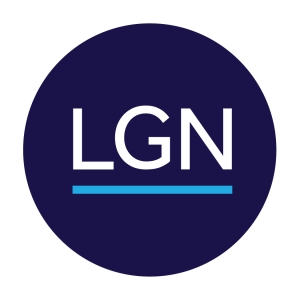Today, Governor Tim Walz and Lieutenant Governor Peggy Flanagan, along with the Minnesota Department of Education (MDE) and the Minnesota Department of Health (MDH), announced Minnesota’s Safe Learning Plan for the 2020-21 School Year.
School districts and charter schools will begin in one of three models: in-person, distance learning, or a hybrid model. Experts at the Departments of Health and Education will partner with local school districts and charter schools to help determine which learning model they should use to start the school year. The decision-making process centers on the health, safety, and wellbeing of our students, staff, and families by using the level of viral activity in the surrounding county and other factors such as the district’s ability to meet mitigation requirements. The learning model decision will be announced by the local school district.
“As a classroom teacher for more than 20 years and a parent of a child in public schools, I am committed to providing a world-class education to our students while keeping them and their teachers safe,” said Governor Walz. “With this approach, we are pairing the knowledge and data from our Departments of Health and Education with the expertise of our local school districts to make the best decisions for our students across the state.”
The Departments of Education and Health will work with school districts and local health professionals throughout the school year to help districts decide if and when they need to dial between learning models depending on the progression and cause of the virus in their specific community. When switching between learning models, the plan prioritizes keeping younger children in the classroom, understanding that transmission is less likely for younger children and that in-person learning is particularly critical at their developmental stage.
The Governor is also requiring school districts and charter schools to give families the option to choose distance learning for their student no matter which learning model their school district is implementing. Additionally, the Governor is requiring school districts to allow teachers and school employees to work remotely to the extent possible.
“We know that families, teachers, and students are juggling competing concerns as we approach ‘back to school’ this fall,” said Lt. Governor Flanagan. “While some are eager to be back in the classroom, others have very real concerns about health and safety. That’s why the Safe Learning Plan sets the guidelines for how safely a school can reopen, based on regional data and the expertise of public health leaders and local administrators, while still allowing families, teachers, and staff to make the decision to stay home.”
Governor Walz is investing over $430 million in federal funding to help schools, educators, students, and families through this uncertain time. Funding comes from the Governor’s Education Emergency Relief, Elementary and Secondary Schools Emergency Relief, and the Coronavirus Relief Fund. Walz provided $180 million through the summer to improve distance learning and fund summer learning programs. Today the Governor announced an additional $250 million of support that will:
• Provide face coverings for every student, educator, and staff member;
• Deploy a comprehensive COVID testing plan for educators and staff members;
• Help cover operational costs, like cleaning supplies, transportation, technology needs, and Wi-Fi access;
• Boost student, family, and educator support, like digital navigation trainings, tutors, translation services, mental health support, and professional development.
“The health and safety of our students, educators, school staff, and families are our number one priority,” said Commissioner Mary Cathryn Ricker. “This localized approach that is centered on the data and informed by a school’s ability to follow all the public health requirements, will help school districts and charter schools navigate this uncertain school year. MDE and MDH will be there supporting our schools every step of the way to help them make decisions that will prioritize the health and well-being of their school communities.”
The Governor has also prioritized family and community needs by mobilizing his state agencies to create strategies and flexibilities for child care and school-age care providers and protections for workers who will need to provide care for children during the school-day.
“We all recognize that COVID-19 is going to continue to impact our schools and our communities for months to come, but those impacts are varied and hard to predict,” said MDH Commissioner Jan Malcolm. “It is important for the well-being of Minnesota children that we get this right, and that we have solid and flexible plans in place to adapt to the COVID-19 challenge. Under the leadership of Governor Walz and in partnership with the Minnesota Department of Education and many stakeholders, we have developed an evidence-based plan that offers the right mix of support and flexibility for schools and communities around the state.”
On March 15, Governor Walz issued Executive Order 20-02, directing the Commissioner of Education to prepare to transition all Minnesota public schools to a distance learning model that continued for the rest of the 2019-20 school year. This June, Minnesota public schools started developing contingency plans for the 2020-21 school year, based on guidance from the Minnesota Department of Education (MDE) and public health guidelines from the Minnesota Department of Health (MDH) which they will implement this fall.
Executive Order 20-82 will have the full force and effect of law upon the approval of the Executive Council, which is made up of Governor Walz, Lt. Governor Flanagan, Attorney General Ellison, Secretary of State Simon, and State Auditor Blaha.
For more information on Minnesota’s Safe Learning Plan for the 2020-21 School Year, visit mn.gov/COVID19/safelearning.
